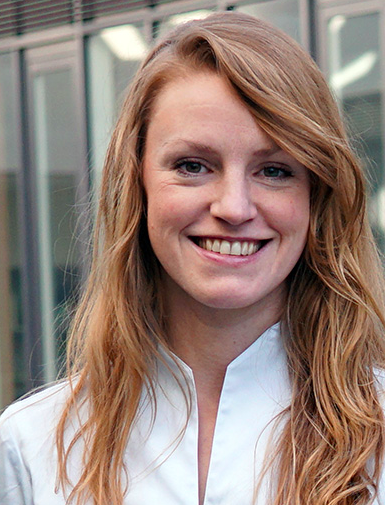Recent Headlines

Dr. Silje Kristiansen, ES assistant professor
Do Perceptions Shape Trust of Gene Editing in Agriculture and Food?
Two ESF researchers received National Science Foundation funding from the Science, Technology and Society Program to explore how perceptions of gene editing in agriculture and food, and how it is regulated or 'governed,' can facilitate or hinder its use.
New gene-editing techniques promise significant benefits within the agricultural sector but realizing the full potential of these technologies will depend on how it is governed, and whether the public accepts it. Previous public concerns and skepticism about GMOs in food might shape current discussions and concerns about gene-editing.
"We're interested in what sorts of factors either impede or promote trust in new technologies - biotechnology - among the public," said Theresa Selfa, professor and associate chair of the Department of Environmental Studies (ES). "We're not trying to get the public to trust the technologies, but we're interested in what sort of governance tools or mechanisms do people feel engage the public and actually take their concerns into consideration and possibly mediate them."
Selfa and Dr. Silje Kristiansen, ES assistant professor, are working with colleagues at Iowa State, the University of Nebraska, and the International Christian University in Japan to examine the publics' perception of gene editing in agriculture and food in the United States, the Netherlands, New Zealand, Japan, and Mexico, and the best ways to communicate information about the technology. "Mexico and New Zealand were important countries to include as both have prominent indigenous communities that have different epistemologies and strong opinions about whether we should be tinkering around with life," said Selfa.
"It's interesting to look internationally and see how these factors differ among countries based on histories with biotechnology, the place agriculture has in the economy, and the different structure of governance," said Selfa.
Proponents say gene-edited foods are different from GMOs because you're not taking genes from another organism, you're just cutting editing the genome of the particular plant," explained Selfa.
"Proponents say it's much more precise and less likely that you would have off-target effects," said Selfa. They emphasize the ability to do things such as remove allergens from a food through targeted editing. "It sounds great, but a lot of people still have concerns about off-target or unintended effects," she said. The researchers are interested in learning how different perspectives and concerns, beyond strict risk assessment, affect the acceptance or rejection of the technology.
"Similarly to the public perception of GMOs and the low acceptance of GMO food, we investigate if this phenomenon happens to gene editing in agriculture," said Kristiansen. "We have these very interesting positions, and we want to look at how are they different across countries and whether public perception and acceptance is influenced by people's trust in science in general."
"The other piece is that the European Union in 2018 made a regulatory decision that was opposite to what the U.S. decided in terms of how they would regulate gene editing, which made it super interesting because we're huge trading partners and have a lot of influence other countries," said Selfa.
To address these gaps, this project analyzes how key actors use competing collective visions of the future and the role of science within it to shape public trust and governance approaches for gene editing for agriculture and food.
The study will also examine how gene editing is portrayed in the mass media, in scientific publications, along with other forms of communication including social media. Because of the influence media coverage can have on people's perception of an issue, media coverage will also be examined. "We're curious to find out how the media portrays gene editing," said Kristiansen. "Do the media portray this new technology as promising and a positive development, or as societies should steer away from?"
The research also offers opportunities for students to be involved and bridge the gap of teaching being separate from research.
Communicating science to the public is important, said Kristiansen. "It's important to spread the knowledge produced at universities to provide people with knowledge that will help them better understand issues and make informed decisions."
ESF's digital storytelling studio is one means to do that, Kristiansen said noting ESF has the resources for students to produce podcasts, videos or create articles or blog posts, and use social media to distribute the work.
"We want to work with students because in my experience they are very creative, and excellent storytellers," said Kristiansen.
Students will be invited to produce stories on this topic," said Selfa, "and then share it beyond ESF to academic and beyond."